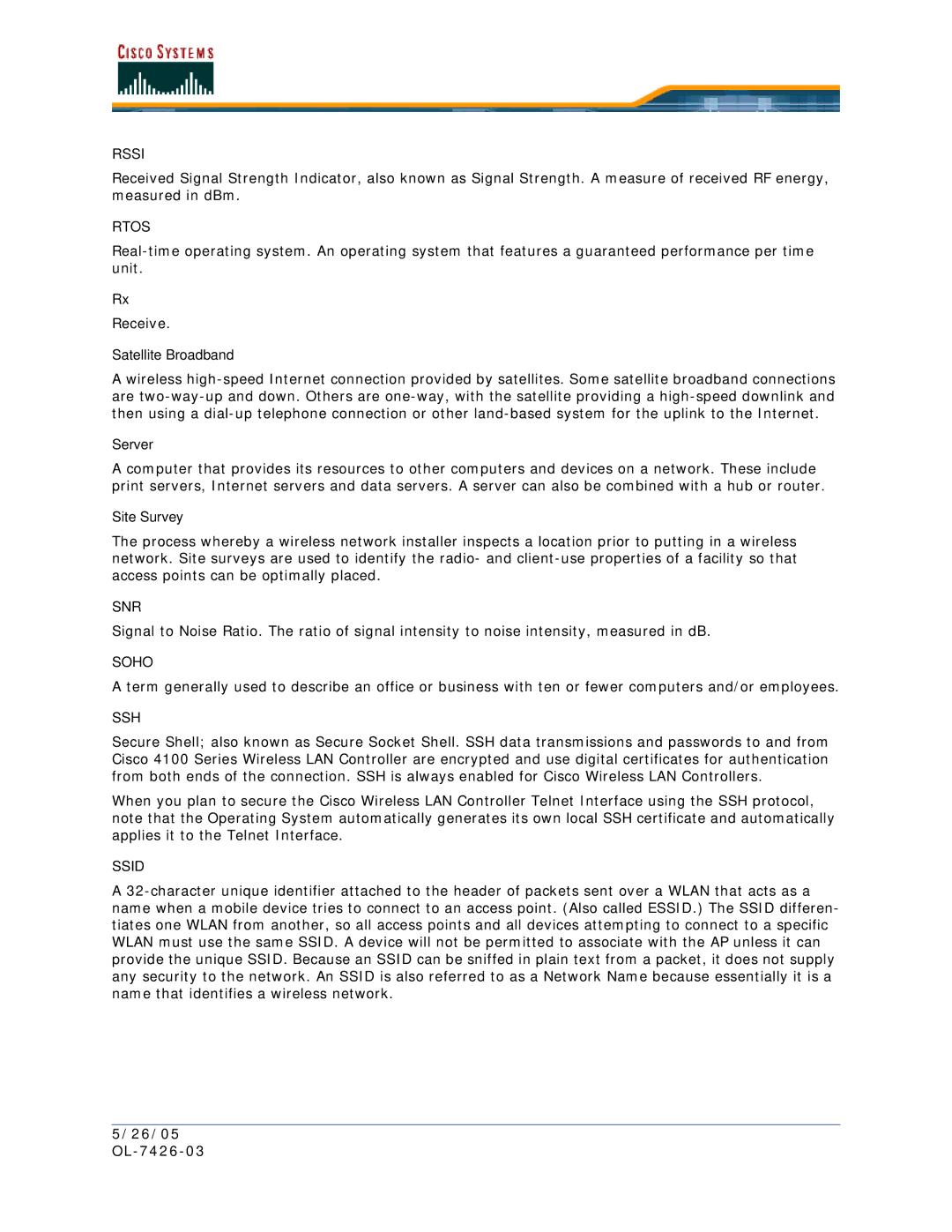
RSSI
Received Signal Strength Indicator, also known as Signal Strength. A measure of received RF energy, measured in dBm.
RTOS
Rx
Receive.
Satellite Broadband
A wireless
Server
A computer that provides its resources to other computers and devices on a network. These include print servers, Internet servers and data servers. A server can also be combined with a hub or router.
Site Survey
The process whereby a wireless network installer inspects a location prior to putting in a wireless network. Site surveys are used to identify the radio- and
SNR
Signal to Noise Ratio. The ratio of signal intensity to noise intensity, measured in dB.
SOHO
A term generally used to describe an office or business with ten or fewer computers and/or employees.
SSH
Secure Shell; also known as Secure Socket Shell. SSH data transmissions and passwords to and from Cisco 4100 Series Wireless LAN Controller are encrypted and use digital certificates for authentication from both ends of the connection. SSH is always enabled for Cisco Wireless LAN Controllers.
When you plan to secure the Cisco Wireless LAN Controller Telnet Interface using the SSH protocol, note that the Operating System automatically generates its own local SSH certificate and automatically applies it to the Telnet Interface.
SSID
A
